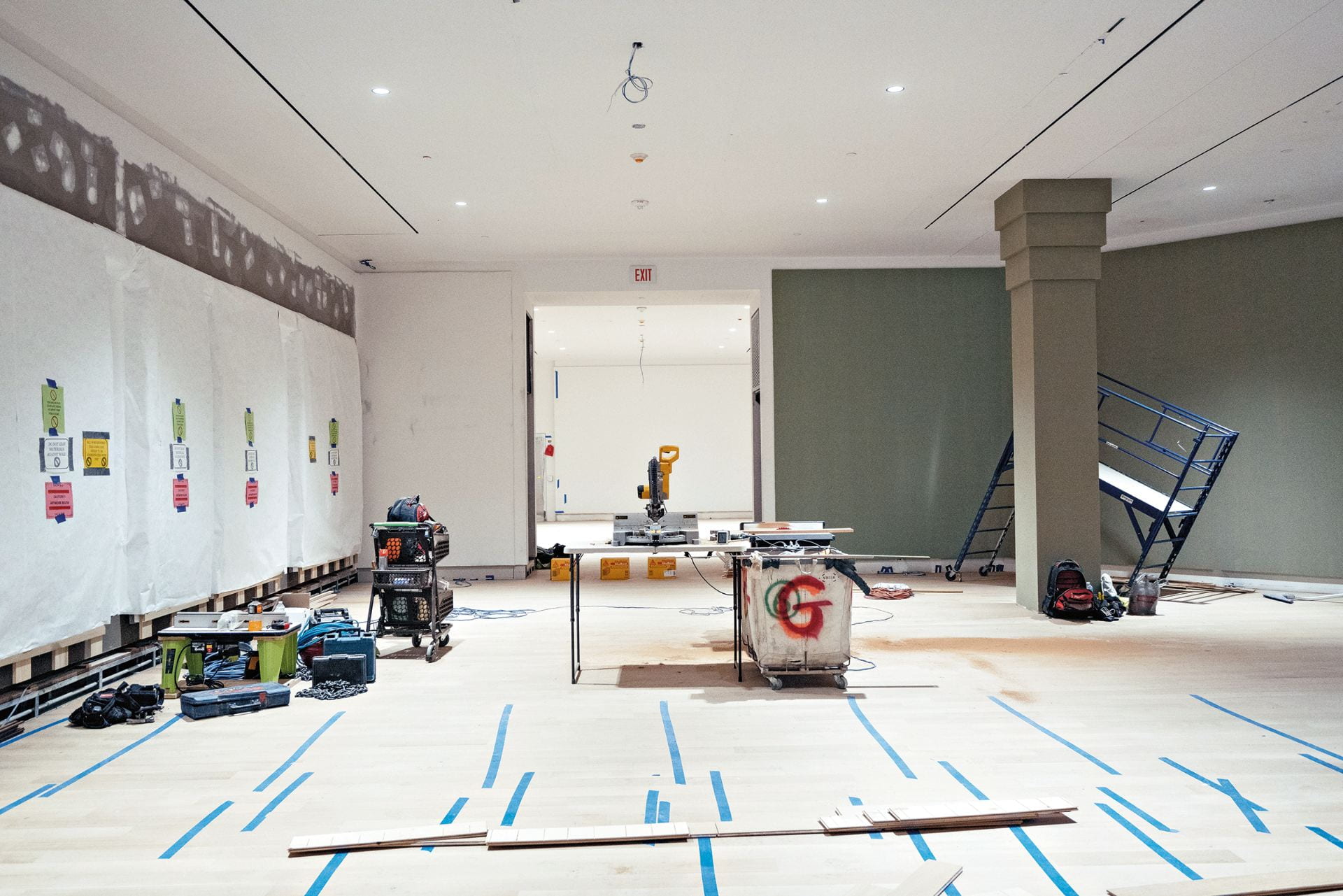Flow. It’s uncanny how well Tod Williams and Billie Tsien anticipated the many needs of the new Hood Museum during the design process that led up to the 2019 opening of the expanded and renovated building. Every day, the staff flows through spaces that are both graceful and efficient, performing all the various duties of museum professionals. We move art from storage to the galleries for installation or to the Bernstein Center for Object study for classes. Visitors meander through the museum, enjoying galleries that are architecturally “quiet” to allow for the art to sing out from the walls. Students and community members alike spend time in the atrium, enjoying the atmosphere over a cup of coffee. Regardless of who we were or what we needed, it seems that the architects were always one step ahead of us, designing for our needs while creating a lasting testament to the creative spirit.

[Above:] In February 2016, Hood Museum art handlers, registrars, and exhibition preparators began packing up the collection.

[Above & below:] March 8, 2017: Construction begins!


[Above:] On April 28, 2017, a lone pine—Dartmouth’s symbol—sat atop the final steel beam as it was put into place during the Topping-off Ceremony.

[Above & below:] April 2017 to April 2019, from skeletal to complete!

The Hood Museum’s new façade is visible from the Dartmouth Green, raising our profile as a distinctive pillar of the arts at Dartmouth. The vitrine window activates the museum’s façade and helps us engage campus. Visitors can glimpse artwork from the Green or enjoy a view of Baker Tower from inside the galleries.

July 2018, In preparation for our reopening celebration on January 26, 2019, museum staff worked long hours to install the sixteen new galleries. Pictured above, former museum preparator John Reynolds installs works of traditional African art in Albright Gallery.

[Above & below:] Kim Gallery’s transformation from 1985 to 2019!

An iconic gallery in the museum, it is home to our Assyrian reliefs and once served as the museum’s reception space. Thankfully, the expansion included the Russo Atrium, where we now hold receptions and so much more.

[Above:] May 2012, Before the expansion and renovation, the museum was fortunate to have Bernstein Study-Storage to utilize as a classroom within the museum.

Enhancing the Hood Museum’s teaching capacity was a principal objective of the project. We now have the Bernstein Center for Object Study (above), which includes three smart study galleries that hosted 5,548 Dartmouth students over the past academic year.

The museum’s once quiet outdoor courtyard (above) has been transformed . . .

. . . Into a welcoming entrance to the galleries and a lively social and event space.

Over the past five years, Russo Atrium has hosted many programs and events for departments across campus. It has also been a place for students to meet, study, and socialize.

Thank you to all of our supporters of our expansion and renovation project. What a success it proved to be! We hope you will return again and again and continue to share our Hood Museum experience with us, and on social media, as we realize our vision of advancing learning, care, and connections through the reach and relevance of visual art and material culture.
This post was authored by: John Stomberg, Virginia Rice Kelsey 1961s Director

ABOUT THE AUTHOR
John R. Stomberg is the Virginia Rice Kelsey 1961s Director of the Hood Museum of Art at Dartmouth College. Before joining Dartmouth in January 2016, he served as the Florence Finch Abbott Director of the Mount Holyoke College Art Museum and the Joseph Allen Skinner Museum, and held leadership positions at the Williams College Museum of Art and the Boston University Art Gallery. He holds a B.A. from Georgetown University and both an M.A. and Ph.D. from Boston University—all in art history. The primary focus of his curatorial work is American art and culture since 1900. Moving between photography, prints, paintings, sculpture, media art, and installation work, his exhibitions have been conceived to broaden our understanding of how art operates in, and often shapes, society. He publishes on modern and contemporary art and issues directly related to museums, education, and academia.

Comments